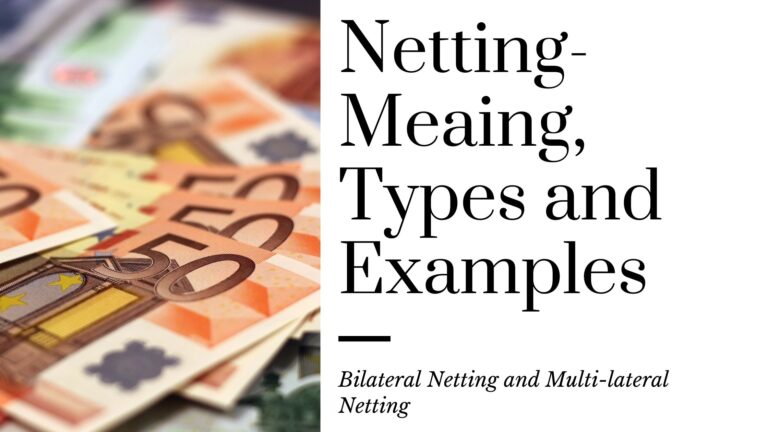Table of Contents
Meaning of Early Delivery
You know very well that currency forward contracts are entered to exchange foreign currency on a specified date in future. But it might happen that in future due to some circumstance’s customer may approach the bank before the specified date for the execution of contract.
Execution of currency forward contract before the specified date is called Early Delivery.
Now think what may be the circumstances that will trigger early delivery of currency forward contracts. Below I am taking two examples one from the perspective of Importer and the other one from the perspective of exporter. There may be some other cases also where early delivery is required.
To understand this concept you must have knowledge of currency forward contract.

Example (in case of Exporter)
On 1 October 2015 Mr. X an exporter enters into a forward contract with a Bank to sell US $1,00,000 on 31st December 2015 at Rs. 65.40/$. But Mr. X got his payment before the due date, Mr. X received amount on 30th November 2015. Mr. X requested the bank to take delivery of the remittance on 30th November 2015 i.e. before due date. The inter-banking rates on 30th November 2015 was as follows:
Spot Rs. 65.22/65.27
One Month Premium 10/15
If bank agrees to take early delivery then what will be net inflow to Mr. X assuming that the prevailing prime lending rate is 18%.
Ans: –
Step I – As per SEBI guideline, you have to settle the transaction at the forward rate even in the case of early delivery.
Amount payable to customer as per forward contract = $1,00,000 * 65.40
= Rs. 65,40,000
Step II – Now due to early delivery bank will sell $1,00,000 at spot to pay customer and will buy at forward to nullify the original forward contract.
This action of selling at spot and buying at forward is a forex swap transaction in technical word.
That means bank will enter in a forex swap transaction to get rid of this situation of early delivery.
Under swap transaction bank will sell spot that means at the rate of Rs. 65.22 and buy at forward that means at the rate of Rs. 65.42 (65.27 + .15).
Now we can see that bank is buying at higher price and selling at lower price therefore it will result into swap cost for bank. This will be recovered by bank from customer.
Swap Cost = (65.42 – 65.22) * 1,00,000 = Rs. 20,000
Step III – Let’s see whether due to early delivery bank is in profit or loss. If its profit then bank will pass the profit to customer and if its loss then bank will recover this amount from customer.
Now the technical term for profit is ‘inlay or inflow’ and for loss is ‘outlay or outflow’.
Bank will also consider interest factor. As due to early delivery there is a time mis-match in settlement. Therefore, interest factor will also be considered.
We can see under the example that when the customer came for the early delivery, at that time spot rate was Rs. 65.22 but due to SEBI guideline bank buy that at Rs. 65.40. That means, bank is paying extra money or there is outlay of funds. Therefore, we have to calculate interest on outlay of fund. And as this is the outlay of fund, bank will recover the interest amount from the customer.
Interest on Outlay of fund = ((65.40 – 65.22) *1,00,000) * 18% / 12 = Rs. 270
Net amount payable to customer = 65,40,000 – 270 – 20,000 = Rs. 65,19,730
Example (in case of Importer)
On 19th January, Bank A entered into forward contract with a customer for a forward sale of US $ 7,000, delivery 20th March at Rs. 46.67. On the same day, it covered its position by buying forward from the market due 19th March, at the rate of Rs.46.655. On 19th February, the customer approaches the bank and requested for early delivery of US $.
Rates prevailing in the interbank markets on that date are as under:
Sport (INR/$) 46.5725/5800
March 46.3550/3650
Interest on outflow of fund is 16% and on inflow of fund is 12%.
Flat charges for early delivery are Rs. 100.
What is the amount that would be recovered from the customer on the transaction?
Answer: –
Step I – As per SEBI guideline, you have to settle the transaction at the forward rate even in the case of early delivery.
Amount receivable from customer as per forward contract = $7,000 * 46.67
= Rs. 3,26,690
Step II – Now due to early delivery bank will buy $7,000 at spot to deliver the customer and will sell at forward to nullify the original forward contract.
This action of buying at spot and selling at forward is a forex swap transaction in technical word.
That means bank will enter in a forex swap transaction to get rid of this situation of early delivery.
Under swap transaction bank will buy spot that means at the rate of Rs. 46.5800 and sell at forward that means at the rate of Rs. 46.3550.
Now we can see that bank is buying at higher price and selling at lower price therefore it will result into swap cost for bank. This will be recovered by bank from customer.
Swap Cost = (46.5800 – 46.3550) * 7,000 = Rs. 1,575
Step III – Let’s see whether due to early delivery bank is in profit or loss. If its profit then bank will pass the profit to customer and if its loss then bank will recover this amount from customer.
Now the technical term for profit is ‘inlay or inflow’ and for loss is ‘outlay or outflow’.
Bank will also consider interest factor. As due to early delivery there is a time mis-match in settlement. Therefore, interest factor will also be considered.
We can see under the example that when the customer came for the early delivery, at that time spot rate was Rs. 46.5800 but due to SEBI guideline bank sell that at Rs. 46.67. That means, bank is receiving extra money or there is inlay of funds. Therefore, we have to calculate interest on inlay of fund. And as this is the inlay of fund, bank will pay the interest amount to the customer.
Interest on inlay of fund = ((46.67 – 46.5800) *7,000) * 12% / 12 = Rs. 6.30
Step IV- Net amount receivable from customer = 3,26,690 – 6.30 + 1575 + 100 = Rs. 3,28,358.70
I hope you understand the concept. If you want to know about the Rule 6 of FEDAI related to early delivery then click here.




